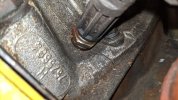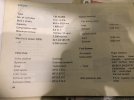kmead
Old enough to know better
I think this would be better placed in a new thread.
One question is with a more efficient air pump, which is what the engine is, has the AFM maxed out in terms of angle of flap displacement at full throttle? If yes then at what RPM is that occurring? I doubt that is happening at 4000 rpm. With your approach does the increase in pressure rise progressively? If not then you would effectively be dumping a lot of fuel (relatively) which would not be well metered.
I honestly suspect the existing FI would compensate appropriately to over 100hp. The 124 Spider set up is nearly identical and is good for 120 at least with no modifications to the system. I don’t know the exact differences between the two but the injectors I believe are the same, the computer has a different PN and the AFM is a different pattern due to being mounted to the air filter housing. I don’t know if the actual specs of the AFM is different or identical to the X one (throat dimensions etc). One could argue if the 124 system is enough different then the possibility exists to switch the parts from a 124 to the X so you have a fully controlled system.
I suspect you are overthinking this.
I never over think anything…
One question is with a more efficient air pump, which is what the engine is, has the AFM maxed out in terms of angle of flap displacement at full throttle? If yes then at what RPM is that occurring? I doubt that is happening at 4000 rpm. With your approach does the increase in pressure rise progressively? If not then you would effectively be dumping a lot of fuel (relatively) which would not be well metered.
I honestly suspect the existing FI would compensate appropriately to over 100hp. The 124 Spider set up is nearly identical and is good for 120 at least with no modifications to the system. I don’t know the exact differences between the two but the injectors I believe are the same, the computer has a different PN and the AFM is a different pattern due to being mounted to the air filter housing. I don’t know if the actual specs of the AFM is different or identical to the X one (throat dimensions etc). One could argue if the 124 system is enough different then the possibility exists to switch the parts from a 124 to the X so you have a fully controlled system.
I suspect you are overthinking this.
I never over think anything…


